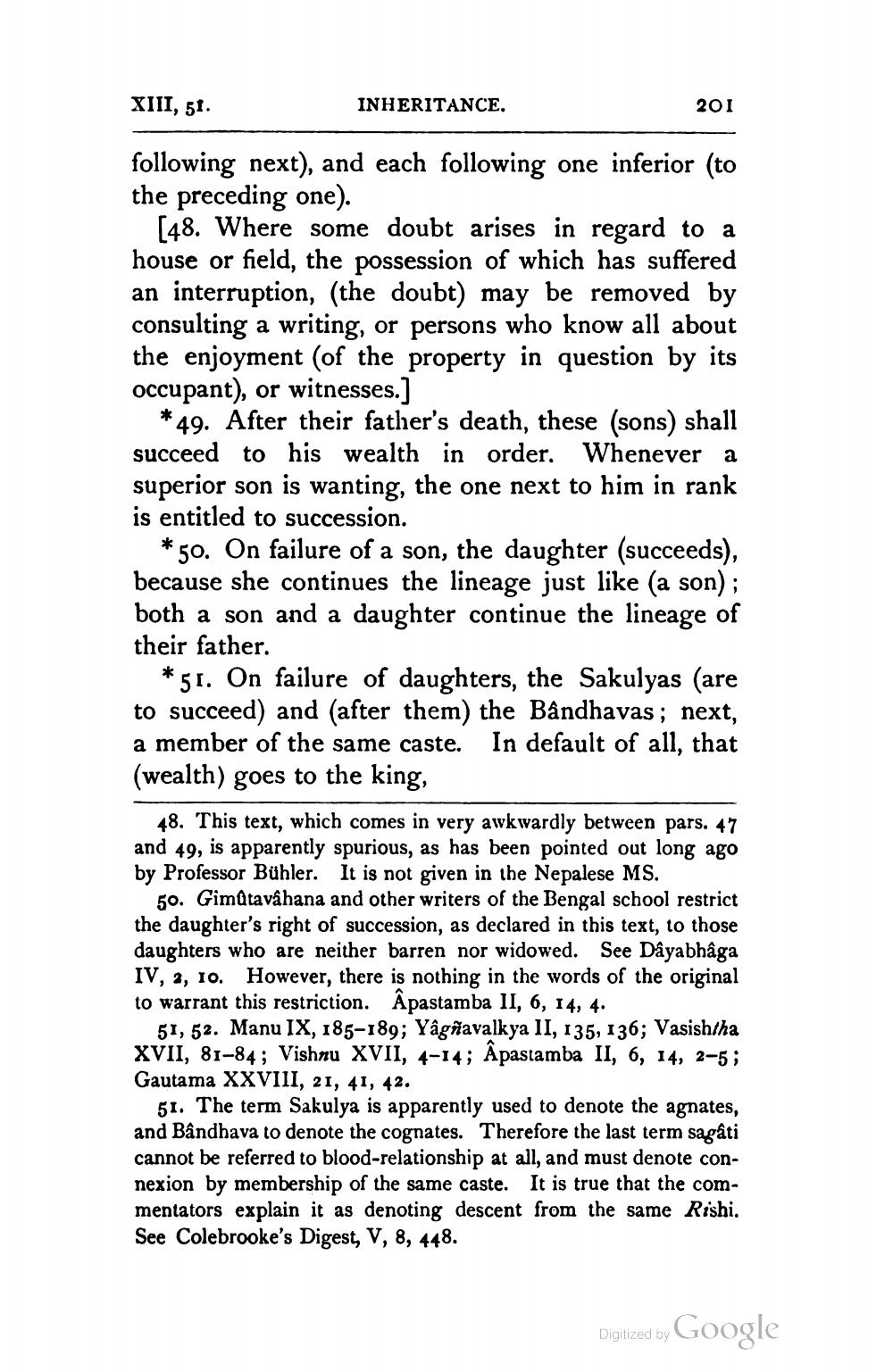________________
XIII, 51.
INHERITANCE.
201
following next), and each following one inferior (to the preceding one).
[48. Where some doubt arises in regard to a house or field, the possession of which has suffered an interruption, (the doubt) may be removed by consulting a writing, or persons who know all about the enjoyment (of the property in question by its occupant), or witnesses.]
*49. After their father's death, these (sons) shall succeed to his wealth in order. Whenever a superior son is wanting, the one next to him in rank is entitled to succession.
*50. On failure of a son, the daughter (succeeds), because she continues the lineage just like (a son); both a son and a daughter continue the lineage of their father.
*51. On failure of daughters, the Sakulyas (are to succeed) and (after them) the Bandhavas; next, a member of the same caste. In default of all, that (wealth) goes to the king,
48. This text, which comes in very awkwardly between pars. 47 and 49, is apparently spurious, as has been pointed out long ago by Professor Bühler. It is not given in the Nepalese MS.
50. GimQtavahana and other writers of the Bengal school restrict the daughter's right of succession, as declared in this text, to those daughters who are neither barren nor widowed. See Dayabhâga IV, 2, 1o. However, there is nothing in the words of the original to warrant this restriction. Âpastamba II, 6, 14, 4.
51, 52. Manu IX, 185-189; Yâgñavalkya II, 135, 136; Vasishtha XVII, 81-84; Vishnu XVII, 4-I stamba II, 6, 14, 2-5; Gautama XXVIII, 21, 41, 42.
51. The term Sakulya is apparently used to denote the agnates, and Bandhava to denote the cognates. Therefore the last term sa gâti cannot be referred to blood-relationship at all, and must denote connexion by membership of the same caste. It is true that the commentators explain it as denoting descent from the same Rishi. See Colebrooke's Digest, V, 8, 448.
Digitized by Google




